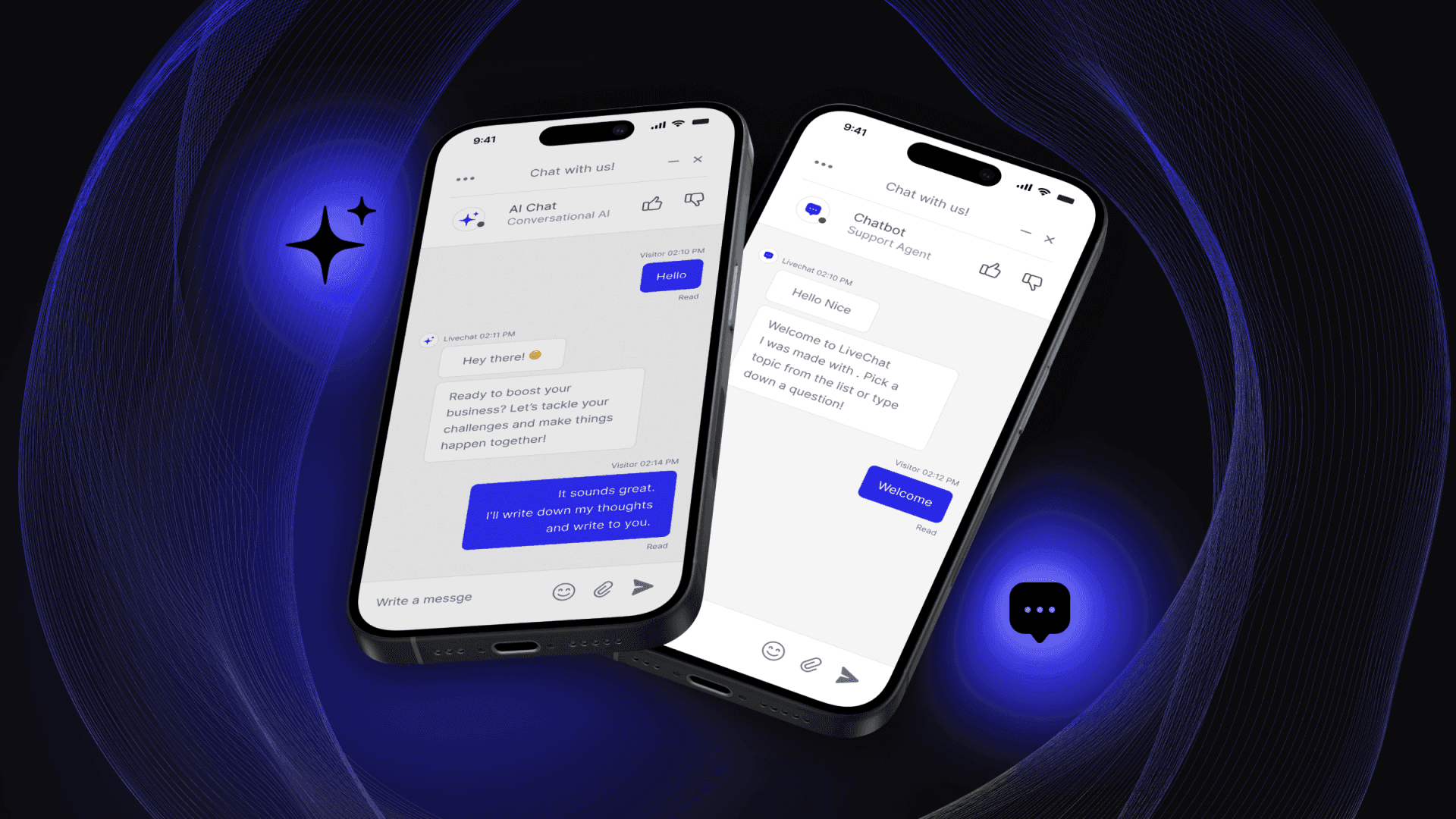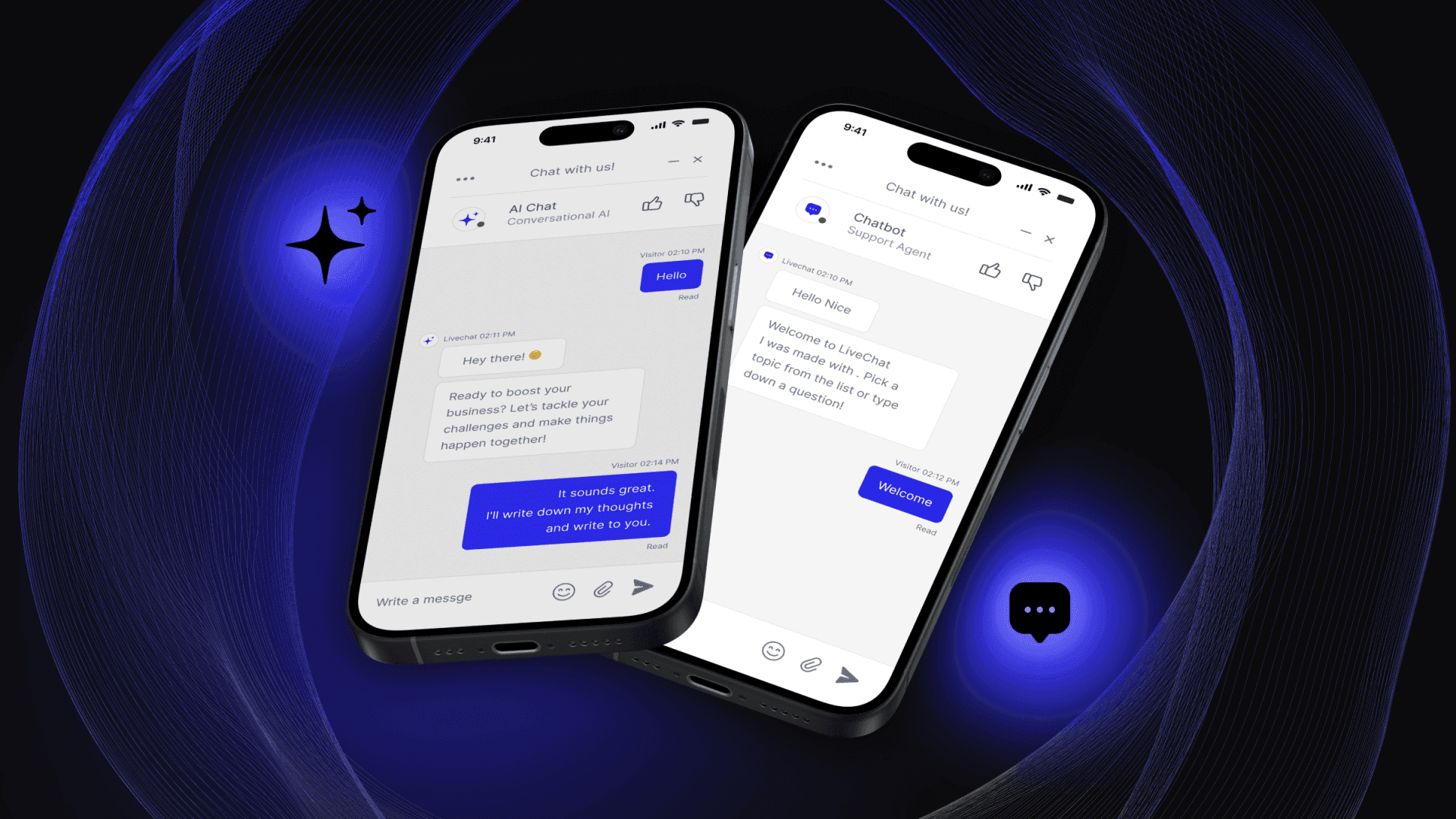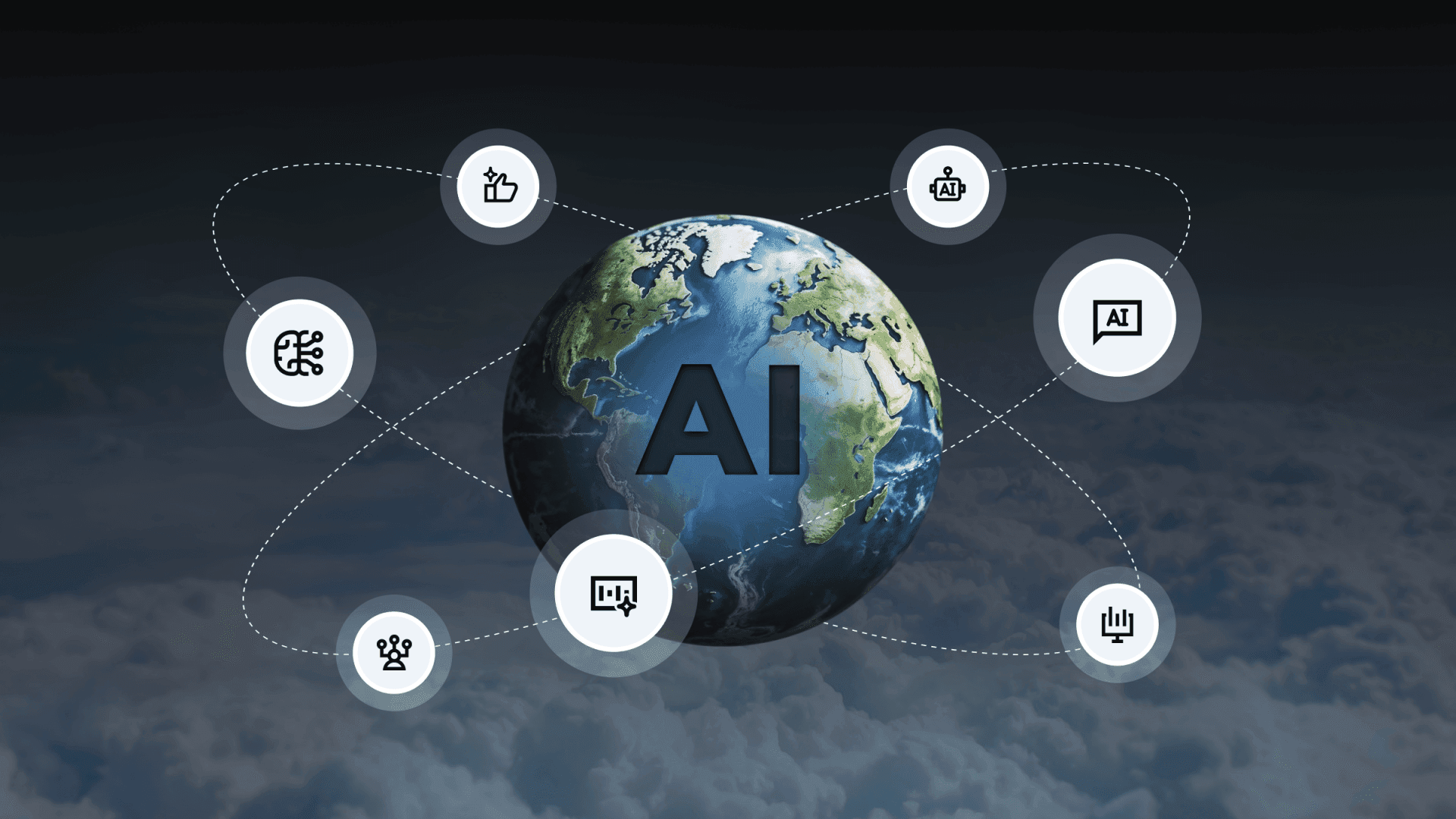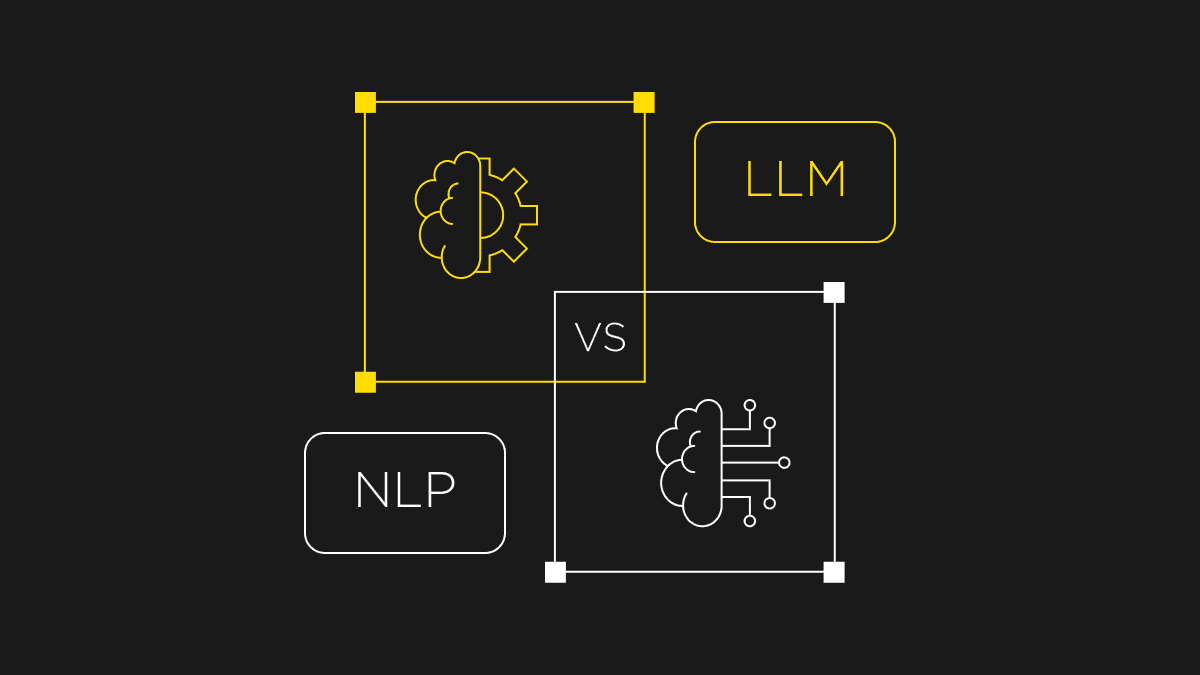Serving global customers nowadays is not just about adding the English language and calling it a day. Modern realities require real-time answers, localized nuances, and no friction. If you’re here reading this article, you’ve already understood that and are well aware of the importance of multilingual chatbots and helpdesk platforms.
Let’s be real. Your custom AI chatbot shouldn’t panic and lag when someone asks a question in Spanish at 4 am, for example. Your support system is in need of something more than just “Hi, how can I help you?”. Your business client service should sound human, understand the context and intent, follow your brand voice, and even survive the rant in some slang. Where am I leading? My take is simple - multilingual customer care is not about answering queries but about building trust in multiple languages 24/7. Considering the results of Markets and Markets forecast that the global conversational AI market is expected to reach 14 billion US dollars by 2025 with a 22% CAGR, you should hurry up to stay up-to-date. Let’s unpack how you can benefit and why this tech has your back.
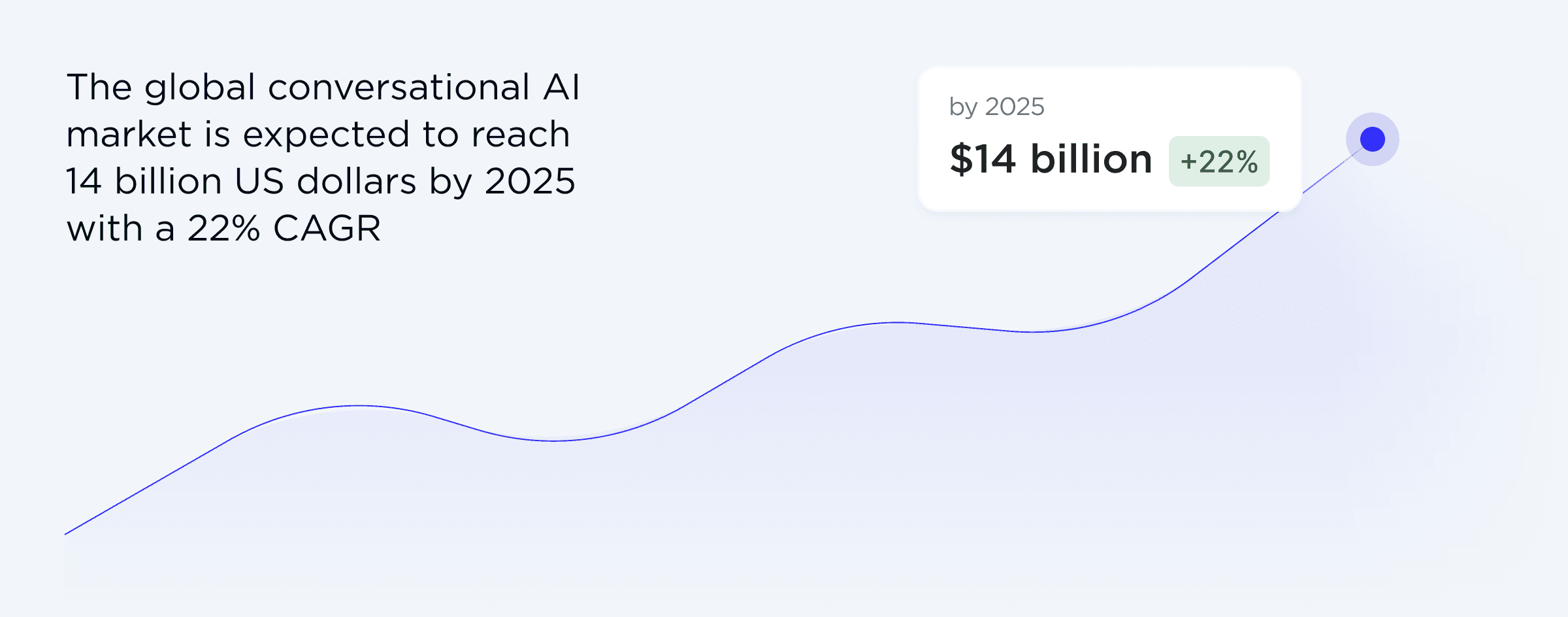
Defining Custom Chatbots and Helpdesk Platforms
Before I start raving about how great these custom AI chatbots and helpdesk platforms are, let’s pause and get these things straight - what they are and why you need them. Let’s break these Avengers of customer support down.
What are custom chatbots?
So, getting the core idea on the table, custom chatbots are AI-powered assistants that are built precisely for your business needs and requirements. What makes them different from generic bots? Well, the main difference lies in the fact that custom ones get your brand tone, understand your services, and are well aware of your customers’ FAQs. Why does your company need one? I’ll be honest - who doesn’t want to have an automated client support system that can easily answer frequently asked questions, track orders, offer some tailored support, and do that in multiple languages?
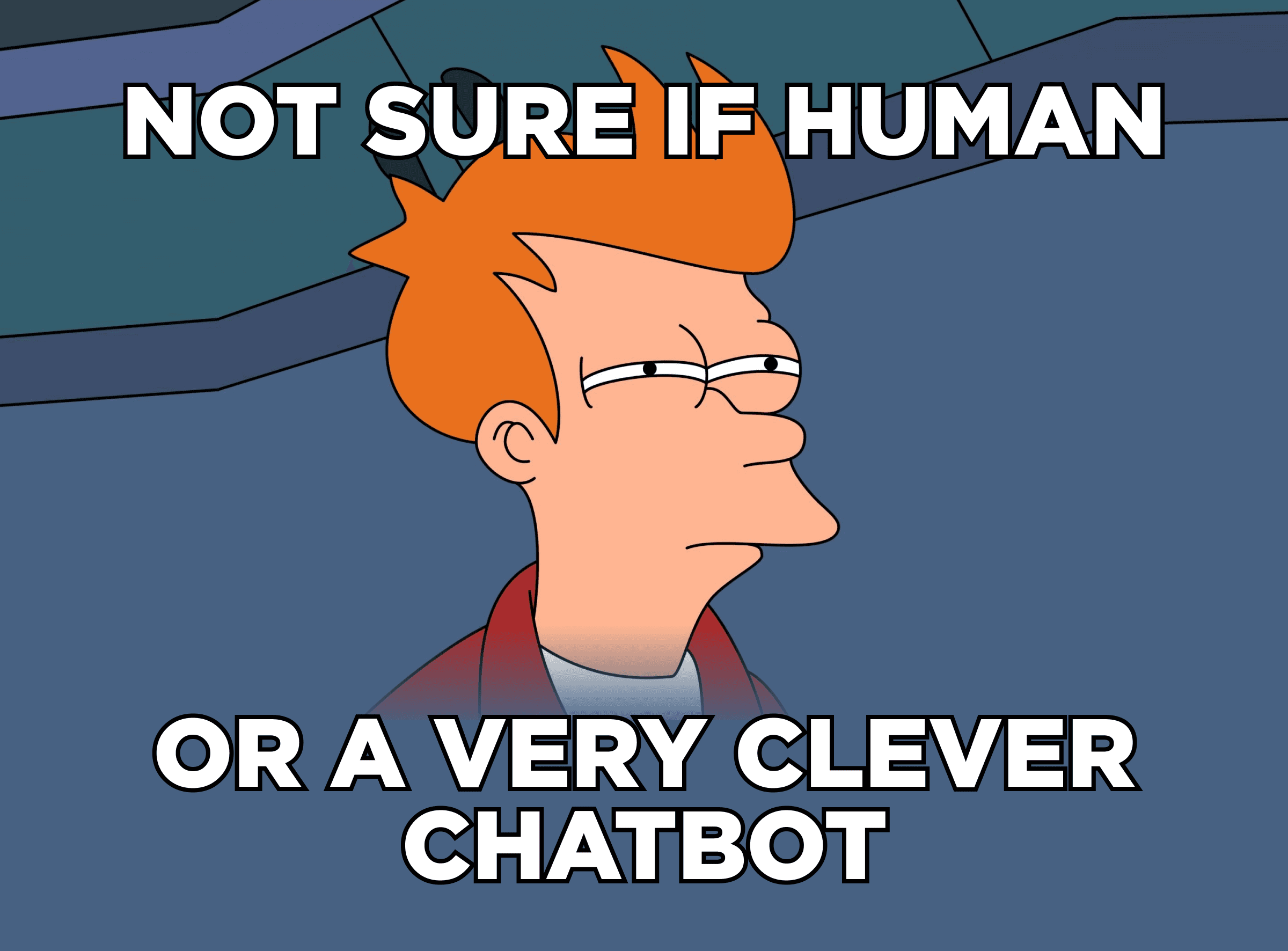
All jokes aside, I do think that custom AI chatbots can make people believe they are interacting with a human.
Modern helpdesk platforms: What are they?
To put it simply, I would compare helpdesk platforms with Jira and how it organizes any internal chaos in your company, or with Notion and how it helps your brain not to melt with all the piled-up tasks. What do they actually do? Helpdesk platforms sort out all incoming messages, assign tasks to relevant people, and keep everything work around the clock (including email, chats, socials, etc).
These automated platforms, combined with multilingual customer support, bring you something like global air traffic control but for customer conversations.
How do chatbots and helpdesk systems work together?
As I’ve already mentioned, together they bring something of value. They boost efficiency by assigning simple queries to be handled automatically and more complex ones to be managed by human agents. What do you get? Here’s the kicker - faster service, decreased workflow, and satisfied customers, who are easily understood no matter where they come from and what language they speak.
What Are the Key Benefits of Multilingual Support?
Alright, so now we know what these tools are and what they do. But you might ask, “What does it have for my business?” Well, let’s unpack the main benefits a custom AI chatbot with multiple languages can bring and boost your company’s efficiency.
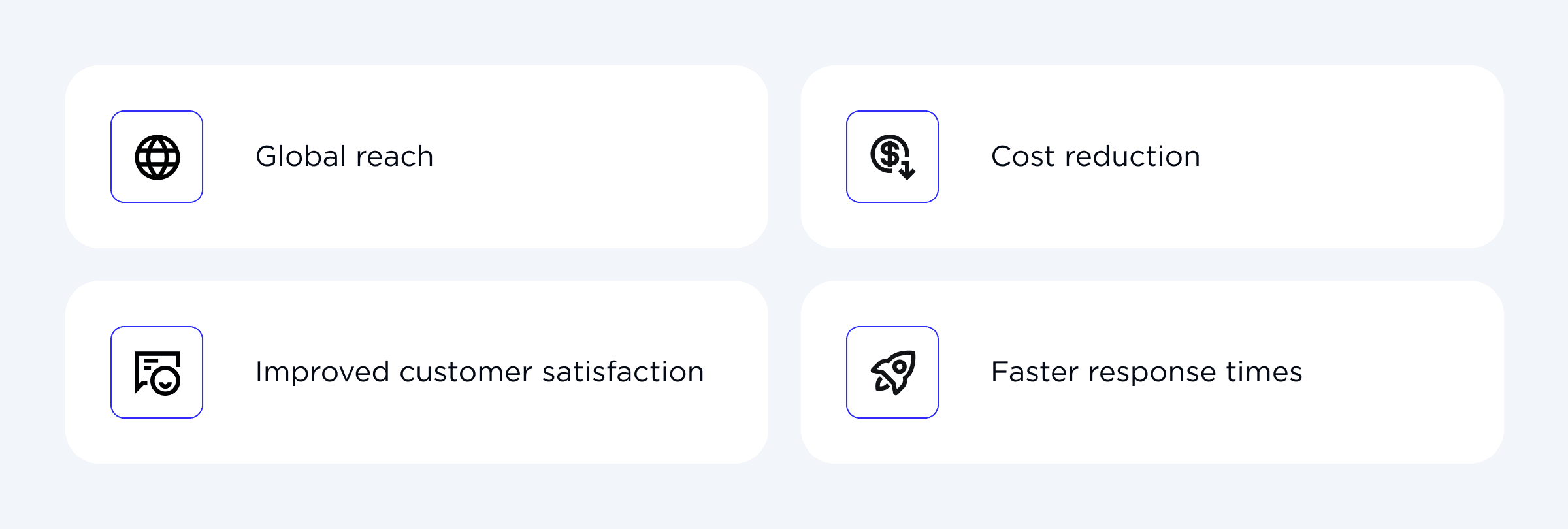
Expanding global reach
There’s a common assumption that everyone speaks English. Well, plot twist - they don’t. When you incorporate multilingual tools, you open your business to completely new markets and regions. They help break barriers and attract more international users.
Improving customer satisfaction
How do you usually feel when coming to a store where people refer to you in your native language? This is how you build trust. These smart bots don’t just translate sentences but establish long-term relationships with your loyal and happy clients.
Cutting down on operational costs
Just sit and think - how many native speakers do you need for every market you work in? Sounds expensive, right? However, a multilingual chatbot serves more people without overloading your support team. Automate the basics - humans can do complex stuff.
Speeding up response times
Humans need sleep, while chatbots don’t sleep. You’re in Dubai, for example, and your customer from Washington texts at 1 am your time. Great that you have a chatbot that’s always ready! It significantly decreases wait and response times and retains your clients.
What Role Does AI Play in Powering Up Multilingual Customer Service?
Nowadays, AI is a real game-changer. When we hear “artificial intelligence”, we automatically think, “Wow, it’s some cool stuff.” And honestly, I think we’re not wrong. Why? Because AI makes everything more efficient and gives a competitive advantage. A custom AI chatbot is no exception. Let’s explore what AI solutions boost their capabilities.
Language detection through Natural Language Processing (NLP)
AI makes those chatbots not only translate but also understand the language. Thanks to NLP, bots can detect the language a customer uses instantly. You don’t need any manual switch, it just flows.
Improved real-time translation capabilities
Machine translation, as we know it, has come a long way. Various AI tools help translate and reply immediately, giving fast and accurate answers. Of course, it’s not flawless, but definitely miles ahead of the early days of Google Translate. And when you combine it with human review? Perfect combo!
Contextual understanding in different languages
Have you talked with ChatGPT? Have you noticed how it may “catch” your mood? That’s what I’m talking about - AI help chatbots identify intent, mood, and even context to craft natural replies (not old-school robotic ones). What do you get? Multilingual customer service that speaks the language and gets everything right.
What Features You Need to Look for in Multilingual Chatbots and Helpdesk Platforms
So far, we’ve discovered that AI is kind of a secret sauce of custom chatbot development. However, what’s the recipe? This is what I’m about to cover here - what you need to look for in chatbots and helpdesk platforms.
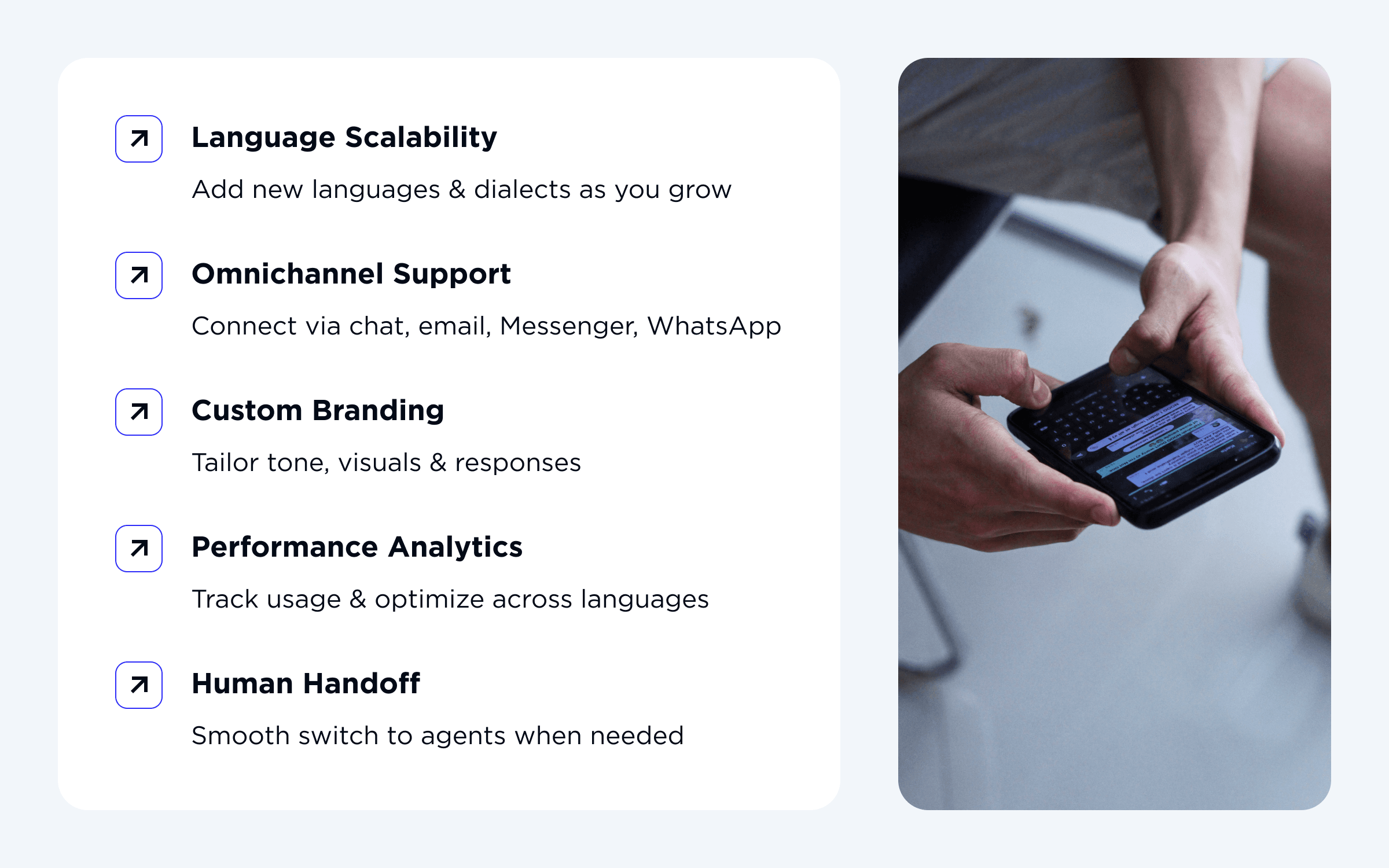
Scalability and a wide range of languages
First things first - opt for platforms that support a wide selection of languages and make it possible to add even more as your business grows. Even better when they support right-to-left languages or various dialects.
Omnichannel communication options
Make sure your platform supports various means of communication, as your customers might not only use different languages, but also different messengers (email, website chat, Facebook Messenger, or WhatsApp).
Branding and customizing capabilities
Your brand has its own tone of voice, style of communication, and personality. So should your chatbot. It’s important to have features that allow customizing tone, style, responses, and even visuals. Everything should match your company in all languages.
Analytics and performance tracking
You can’t improve anything when you don’t know what needs to be. Reliable platforms offer you rigorous analytics of how every language bot performs. It also identifies where users usually drop off and what queries are confusing. This way, you can fix that.
Smooth human handoff and escalation features
Let’s be honest - sometimes the bot just won’t cut it. And it’s okay. Just make sure there’s a reliable backup and your setup lets chatbots send complicated queries to human agents. It should be smooth, with translated context and no gaps.
Overcoming Challenges in Multilingual Chatbots Implementation
Find those features cool? I bet you do! But don’t rush to celebrate because there are some pitfalls when implementing multilingual customer service to know in advance not to fix them later.
Local intricacies and translation quality
Remember, some local slang or poor translation (Google Translate isn’t enough) may lead to misunderstandings. You should always elaborate on localized content.
Following the consistent tone and voice
As I’ve stated earlier, your brand voice is crucial across languages. Apart from that, you need to fine-tune each language to maintain the tone to make it feel like you.
Managing complex customer requests
The gold standard to use is the hybrid model - AI plus human. Simple questions are easy, but when stuff gets emotional or super technical, AI gets puzzled and needs a human.
| Challenge | Solution |
| Poor translations | Involve local experts |
| Off-brand tone | Hire native linguists |
| Complex queries | Let humans step in |
Best Practices to Follow for Efficient Multilingual Support
Let me remind you that any challenges are just a part of the journey. You know them upfront - you’re already ahead of the competition. And when you learn some of the best practices in top-tier multilingual customer care tools, you’ll be unbeatable!
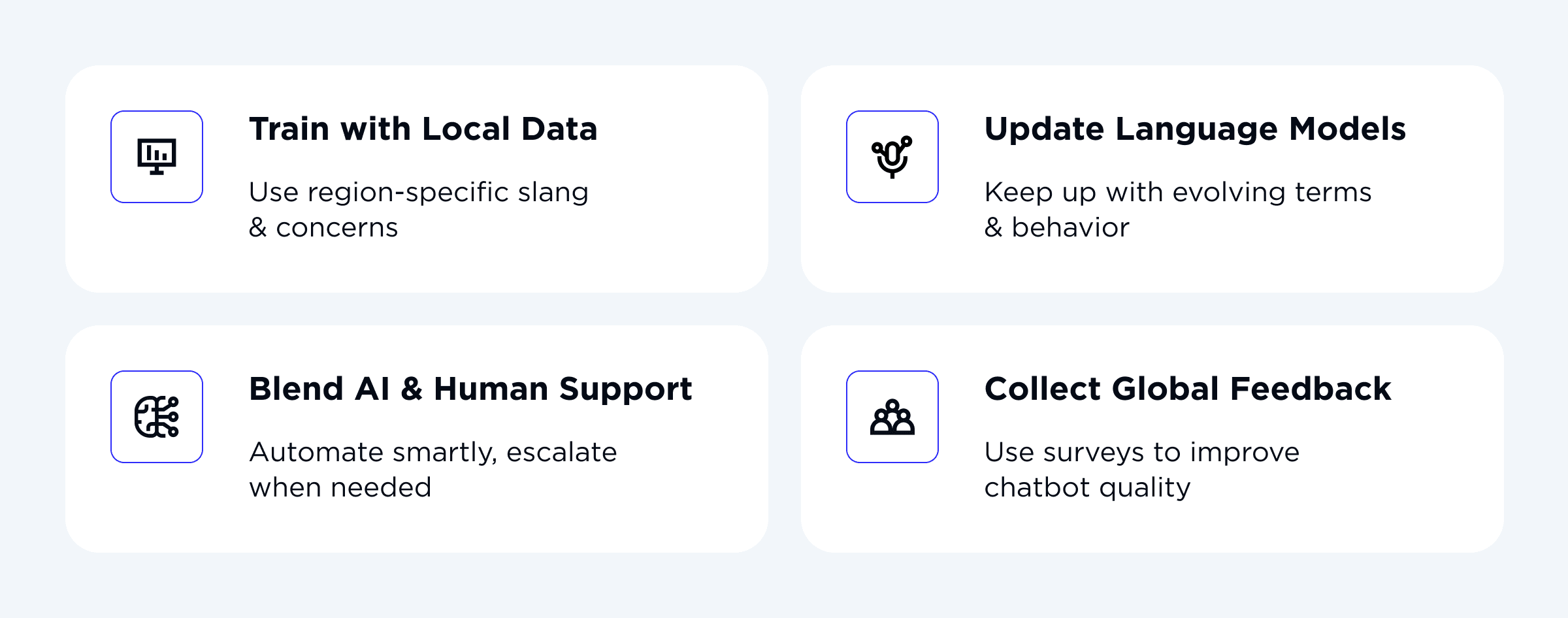
Training chatbots with region-specific data
You need to use training sets that reflect regional slang, local word usage, and customer concerns in every region where you do your business.
Integrating AI with human support
I never advise our clients to go for full automation. You need to keep humans in the loop (for high-priority, complex, and/or sensitive cases). Bots will filter them well.
Updating language models regularly
The same as programming ones, languages evolve. That’s why it’s vital to regularly check and update changes, new terms, and new customer behavior.
Collecting feedback from global users
How much do you need to improve? Well, don’t ask me - ask your users. You can include some simple feedback surveys to gather chatbot ratings and learn about poor performance.
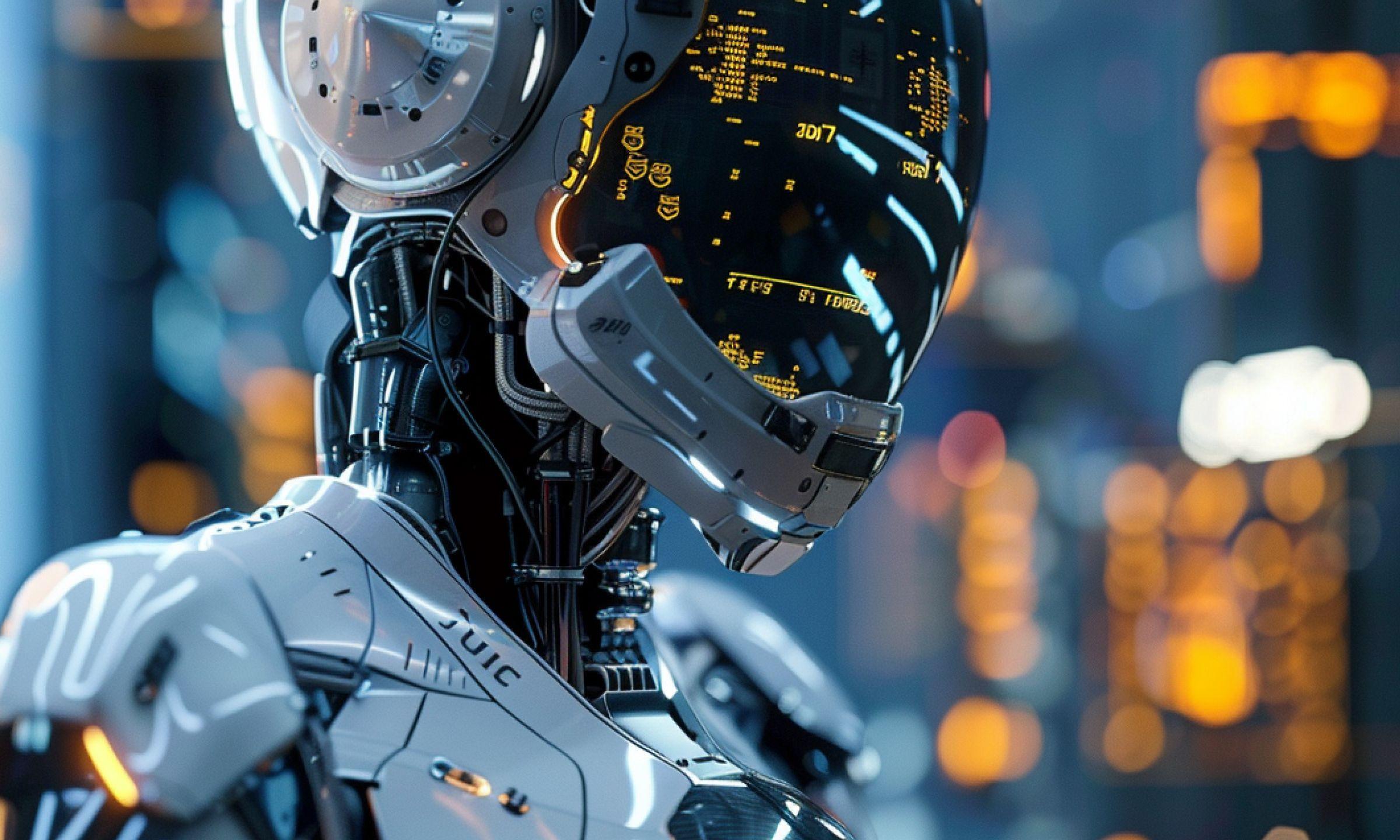
Partner up with OTAKOYI to build smart AI-driven customer systems.
CONTACT USWhat Future Trends Are to Come in Multilingual Customer Service
What I’m about to say will not surprise you - not technology stays the same. The same goes for multilingual customer support, which is expected to gain more traction and evolve with time. So, what are its future trends? (I do recommend reading the information below carefully, as it’s something for you to consider in the future)
Personalized AI interactions
Our tomorrow’s chatbots will not just translate. They will remember users’ preferences, dialogue context, and customers’ history, and it will all be shared across multiple languages. I think that’s the best trend - more personalised but automated tools.
Voice-powered bots and real-time speech translation
How many Gen Zers do you know? Have you noticed how often they send voice messages? Well, that’s the future of custom chatbot development. Typing is old-fashioned. So, AI speech recognition and real-time translation solutions are picking up speed.
Region-specific localization and cultural customization
There’s one not very obvious tip - going local means going global. What does it imply? Such bots are going to be tuned to regional slang, local users’ habits, and even customized to cultural norms. These changes may transform the future of customer service.
Final Words
I’m happy you’re still with me. So, what’s the main take? Multilingual customer support combined with helpdesk platforms isn’t just nice to have anymore. It has become essential. Nowadays, it is a must to speak your customer’s language. Nowadays, when you partner with a reliable software company like OTAKOYI, which can conduct careful planning, implement smart AI, and add some human touch, you can run a business that delivers fast and personal service.
So buckle up and start your journey with the frontline devs of your support squad, managing multilingual queries, solving issues, and syncing with your CRM. Ready to deploy?


